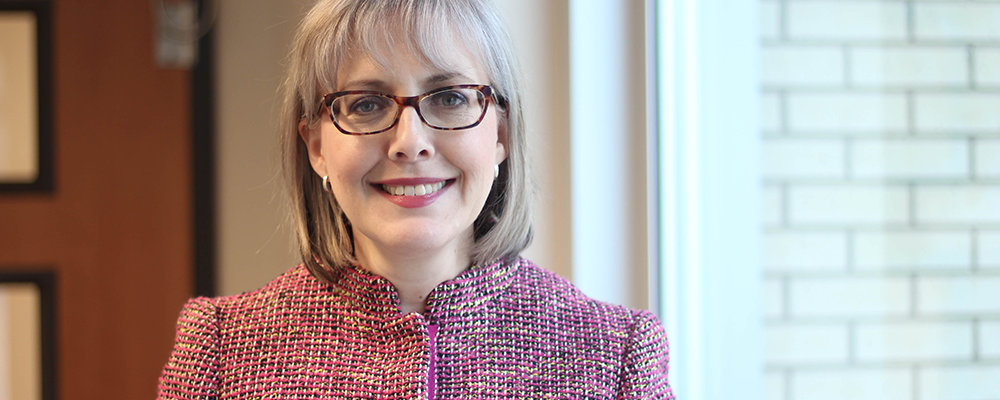Associate dean positions MD program as national leader in research, social accountability
Curriculum shifts driven by divers needs of the community future docs will eventually serve
By Sasha Roeder Mah
The MD program in the Faculty of Medicine & Dentistry has seen a major shift in the past several years, says associate dean Tracey Hillier, with both curriculum and instructional approaches changing to reflect the increasingly diverse needs of students and the community they will eventually serve.
"While some schools focus mainly on research and others focus more on accountability to local populations, the University of Alberta is developing programs of excellence across multiple areas, developing student-led curricular change," says Hillier. She is focusing the program's drive to position itself as a nationwide leader on two fronts: social accountability and research.
What makes the U of A the perfect place for both? "We're leveraging the relationships that have come from our strong Division of Community Engagement," for one, says Hillier, "and world-class researchers and facilities. We're also able to be exceptionally adaptable in our ability to respond to changing health-care needs of the community because of our innovative faculty and our strong partnerships with students."
Social accountability
Hillier has prioritized making changes to the recruitment process to draw a more diverse population of medical students. "We need to look like the community we're representing; we need to have people from a broad variety of backgrounds." While the Division of Community Engagement is charged with recruiting from rural and Indigenous populations, the MD program also engages in outreach to city high schools. "But we now know that is too late," says Hillier, "so we are now going out to junior highs, because toward the end of junior high is when most are making choices about their future."
The MD program has also reviewed its admissions processes to break down barriers to diversity. To help reduce bias, Assistant Dean of Diversity Helly Goez suggested an implicit association test for all admissions interviewers. This test can be tremendously effective, Goez says. "It gives scenarios to someone on a computer to show them their scores within biases such as gender and skin tone," she explains. Implicit bias training was implemented last year for those involved with admissions selection, says Hillier, and the committee will continue to use the process.
It's now mandatory that all MD students participate in some form of community service, says Hillier, a way for those students who come from a more privileged background to build an understanding of the challenges faced by disadvantaged populations.
"We're also piloting a new social-justice learning community for those who are exceptionally interested in serving marginalized populations," says Hillier. Developed in collaboration with the Division of Community Engagement and interested students, this focused program will see enhancements to the core curriculum-which already contains elements of social accountability throughout all four years-and more opportunities to train in places and with mentors who serve vulnerable populations. Students will have an opportunity from the moment they begin their first year to declare an interest in joining this community.
Spotlight on research
Regarding a revitalized focus on research, says Hillier, "we need physician scientists who are going to solve the health-care problems of the future, and we equally need to support excellence from that end of the spectrum." Beginning this academic year, students interested in learning more about research and improving those skills can declare an interest and join a pilot of the new research learning community.
The community, created in collaboration with students, will encompass people with graduate degrees, students in the MD program and those within the MD STIR (Special Training in Research) program. Facilitated by the MD office, they'll share knowledge and nurture each other's research interests, with the support of both external guest speakers and top-notch researchers within the faculty. Hillier is also hoping to encourage students to further pursue their interests in medical research through the MD/PhD program.
Eventually the research learning community will become more structured. "We're hoping for a series of seminars that rotates every two years," says Hillier. But in its infancy, it will exist mainly as an informal gathering of MD students and faculty who share a passion for research.
